In order to generate a more inclusive dataset of Pseudomonas genes mapped to putative in-paralogs and putative orthologs in other Pseudomonas species/strains, we developed a Pseudomonas Orthologous Groups classification system.
To generate ortholog groups, pair-wise DIAMOND searches were run on all genomes in the database to find reciprocal best hits (RBHs) for each gene. These analyses often resulted in multiple candidate genes for RBH status, which were narrowed down by examining the similarity between the query's flanking genes and the hit's flanking genes. If two candidate genes were directly adjacent, they where both accepted as RBHs that involve putative in-parology.
Pairwise intra-genome DIAMOND searches were also performed to acquire in-paralog information (i.e. gene duplications occurring after species divergence). If two genes in one genome were reciprocally more similar to each other than to any gene in the other genomes, the two genes were designated putative in-paralogs. Ortholog groups are built by starting with a seed gene and then adding all genes to which there is a RBH or in-paralog relationship.
Every new gene added to an ortholog group was then treated as a seed gene and the addition process was repeated until all qualifying genes had been added. The result was the development of orthologous groups, specifically generated for Pseudomonas species genomes, which can be used to sort search results.
Pseudomonas Ortholog Group POG004897
| Strain | Locus Tag | Description | Same-Strain Members | Fragment ? | |
|---|---|---|---|---|---|
| Pseudomonas brassicacearum 51MFCVI2.1 | PSBVI21_RS0127980 |
cytochrome
|
2 same-strain members: PSBVI21_RS0115145 PSBVI21_RS0127980 |
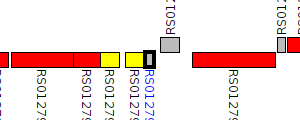
|
|
| Pseudomonas brassicacearum DF41 | CD58_RS00195 |
cytochrome
|
1 member |

|
|
| Pseudomonas brassicacearum PA1G7 | AW28_RS07095 |
cytochrome C
|
2 same-strain members: AW28_RS07095 AW28_RS20835 |
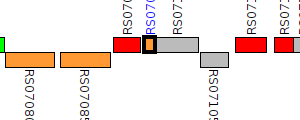
|
|
| Pseudomonas brassicacearum PA1G7 | AW28_RS20835 |
cytochrome
|
2 same-strain members: AW28_RS07095 AW28_RS20835 |

|
|
| Pseudomonas brassicacearum PP1_210F | P908_RS02370 |
cytochrome
|
2 same-strain members: P908_RS02370 P908_RS21930 |
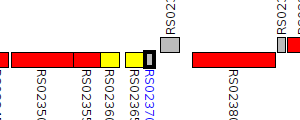
|
|
| Pseudomonas brassicacearum PP1_210F | P908_RS21930 |
cytochrome C
|
2 same-strain members: P908_RS02370 P908_RS21930 |

|
|
| Pseudomonas brassicacearum subsp. brassicacearum NFM421 | PSEBR_cmegm2 |
cytochrome c
|
2 same-strain members: PSEBR_cmegm2 PSEBR_a1925 |

|
|
| Pseudomonas brassicacearum subsp. brassicacearum NFM421 | PSEBR_a1925 |
cytochrome c
|
2 same-strain members: PSEBR_cmegm2 PSEBR_a1925 |

|
|
| Pseudomonas chlororaphis EA105 | NZ35_RS18790 |
cytochrome
|
2 same-strain members: NZ35_RS18790 NZ35_RS25585 |

|
|
| Pseudomonas chlororaphis EA105 | NZ35_RS25585 |
cytochrome C
|
2 same-strain members: NZ35_RS18790 NZ35_RS25585 |
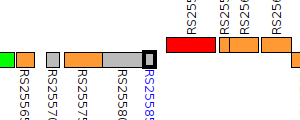
|
|
| Pseudomonas chlororaphis HT66 | M217_RS0103660 |
cytochrome C
|
2 same-strain members: M217_RS0103660 M217_RS0116195 |

|
|
| Pseudomonas chlororaphis HT66 | M217_RS0116195 |
cytochrome
|
2 same-strain members: M217_RS0103660 M217_RS0116195 |
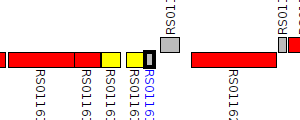
|
|
| Pseudomonas chlororaphis O6 | PchlO6_0085 |
cytochrome
|
2 same-strain members: PchlO6_0085 PchlO6_3914 |

|
|
| Pseudomonas chlororaphis O6 | PchlO6_3914 |
cytochrome C
|
2 same-strain members: PchlO6_0085 PchlO6_3914 |
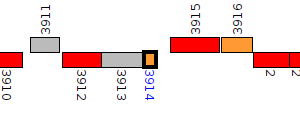
|
|
| Pseudomonas chlororaphis PA23 | EY04_RS28450 |
cytochrome
|
2 same-strain members: EY04_RS18735 EY04_RS28450 |

|
|
| Pseudomonas chlororaphis PA23 | EY04_RS18735 |
cytochrome C
|
2 same-strain members: EY04_RS18735 EY04_RS28450 |

|
|
| Pseudomonas chlororaphis PCL1606 | PCL1606_RS11825 |
cytochrome C
|
2 same-strain members: PCL1606_RS11825 PCL1606_RS29215 |

|
|
| Pseudomonas chlororaphis PCL1606 | PCL1606_RS29215 |
cytochrome
|
2 same-strain members: PCL1606_RS11825 PCL1606_RS29215 |

|
|
| Pseudomonas chlororaphis subsp. aurantiaca JD37 | JM49_RS11895 |
cytochrome C
|
2 same-strain members: JM49_RS11895 JM49_RS29560 |

|
|
| Pseudomonas chlororaphis subsp. aurantiaca JD37 | JM49_RS29560 |
cytochrome
|
2 same-strain members: JM49_RS11895 JM49_RS29560 |
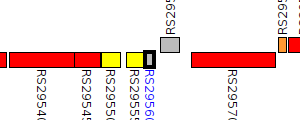
|